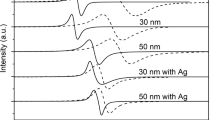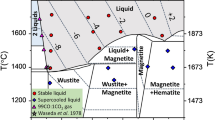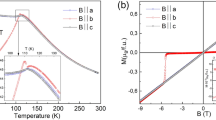Abstract
THE structure of the molybdenite crystal has been determined by Pauling and Dickinson1 and Hassel2. They found that the molybdenum and sulphur atoms in it are arranged in separate layers perpendicular to the c-axis. Each layer of molybdenum atoms has two layers of sulphur atoms on opposite sides of it. The whole structure is then built up by the repetition of composite layers each of which is formed by a molybdenum layer sandwiched between two sulphur layers. The excellent cleavage in a plane parallel to the layers themselves may be regarded as a natural consequence of the large distance between these successive composite layers. In layer structures of this type, it seems that the major portion of the primary valencies is exercised within the layers themselves, and only secondary forces hold the layers together to form the crystal lattice.
This is a preview of subscription content, access via your institution
Access options
Subscribe to this journal
Receive 51 print issues and online access
$199.00 per year
only $3.90 per issue
Buy this article
- Purchase on Springer Link
- Instant access to full article PDF
Prices may be subject to local taxes which are calculated during checkout
Similar content being viewed by others
References
Pauling, L., and Dickinson, R. G., J. Amer. Chem. Soc., 45, 1466 (1923).
Hassel, O., Z. Krist., A, 61, 92 (1924).
Dutta, Ajit Kumar, Ind. J. Phys., 18, 249 (1944).
Author information
Authors and Affiliations
Rights and permissions
About this article
Cite this article
DUTTA, A. Effect of Temperature on Magnetic Susceptibility of Molybdenite Crystals. Nature 156, 240–241 (1945). https://doi.org/10.1038/156240b0
Issue Date:
DOI: https://doi.org/10.1038/156240b0
Comments
By submitting a comment you agree to abide by our Terms and Community Guidelines. If you find something abusive or that does not comply with our terms or guidelines please flag it as inappropriate.



